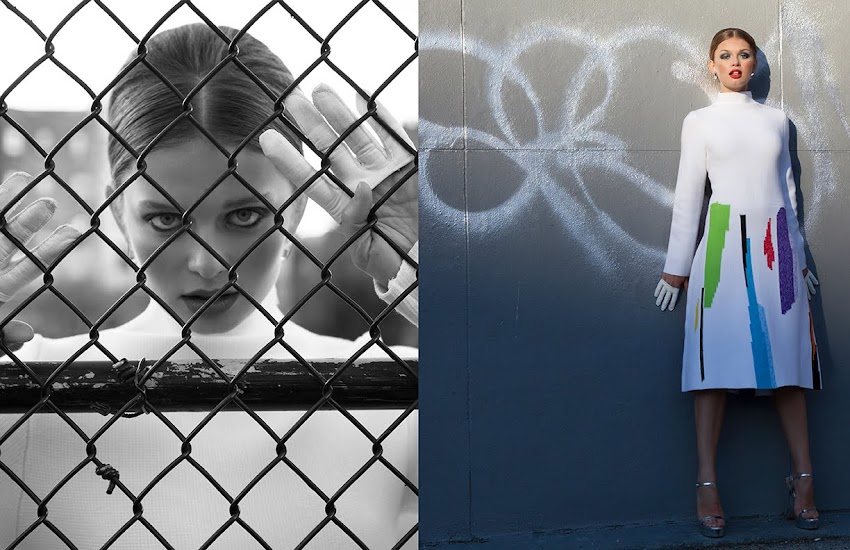Catch light, by definition is:a light source that causes a specular highlight in a subject's eye in an image. They are also referred to as eye lights or Obies, the latter a reference to Merle Oberon, who was frequently lit using this technique. A catch light may be an artifact of the lighting method, or have been purposely engineered to add a glint or "spark" to a subject's eye during photography. This technique is useful in both still and motion picture photography. Adding a catch light can help draw attention to the subject's eyes, which may otherwise get lost among other elements in the scene.
A catch light is not the same as the red-eye effect; in general, red-eye is an undesired effect (caused by the reflection of light from the retina inside the back of the eyeball), while catch lights are often aesthetically desirable, and produced by light reflecting from the cornea. Especially in portraiture, eyes without catch lights are often said to appear dull or lifeless. Lighting is often arranged in studio portraits specifically to create attractive catch lights.
As a specific light source, a catch light is usually fairly dim or focused, as to not affect any other part of the scene or face. Many other lighting methods, however, are known for the distinctive or unique catch light they produce. Among those methods are ring lights, which produce several highlights in a ring, and large softboxes, which produce large, square highlights. While catchlights most often appear to be simply bright spots, as reflections of their surroundings they can contain entire images.
First, you should:
1. Find your light source.
In any photo shoot…whether professional, hobbyist,
Where is your light coming from? Look around.
Are you outside? Are you in open shade? Are you inside? Where is your light coming from?
Open shade:
Light source: sun, filtered by the shade of the walkway.
Open Sky:
Light source: sun, filtered by the distance of the sun in the evening light.
Window or door:
Light source:Photo taken inside, facing the window.
Flash:Taken in a photo studio, indoor or outdoor space.
Light source: electronic or continuance artificial lights
If shooting without artificial lights, turn your subject to face your light source. Look into their eyes to see where the catch light is reflecting in your subject’s eyes. Move or tilt the subjects face or body to where you feel the catchlights have the look you want.
With artificial light source, how high and how far to the right or left will affect the catchlights in your subjects eyes. I find that having the light source at a 45 degree angle, pointing down towards the subjects forehead creates a nice catchlight. It take practice and talking to your subject as to where the catchlight should and will fall.
